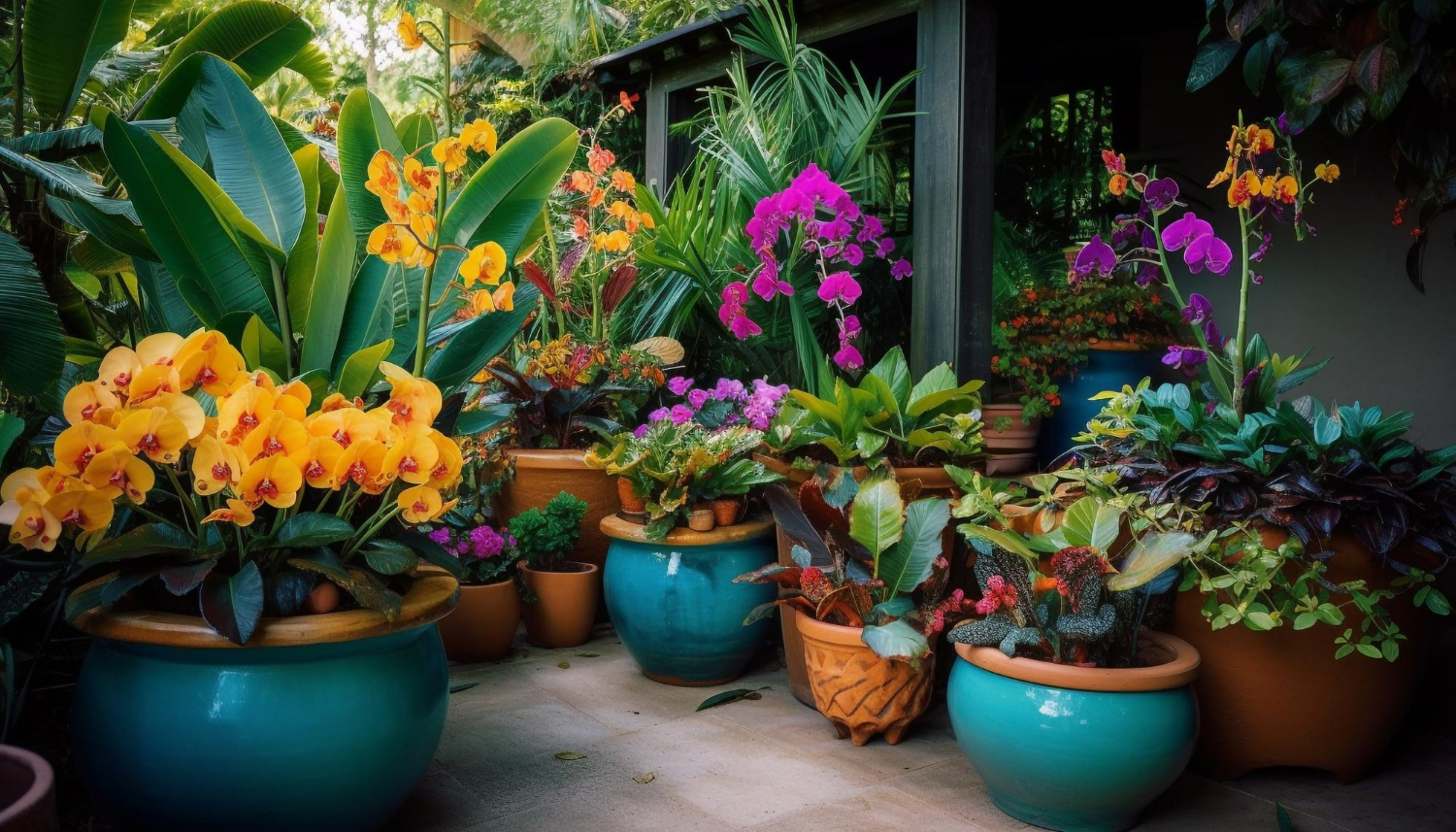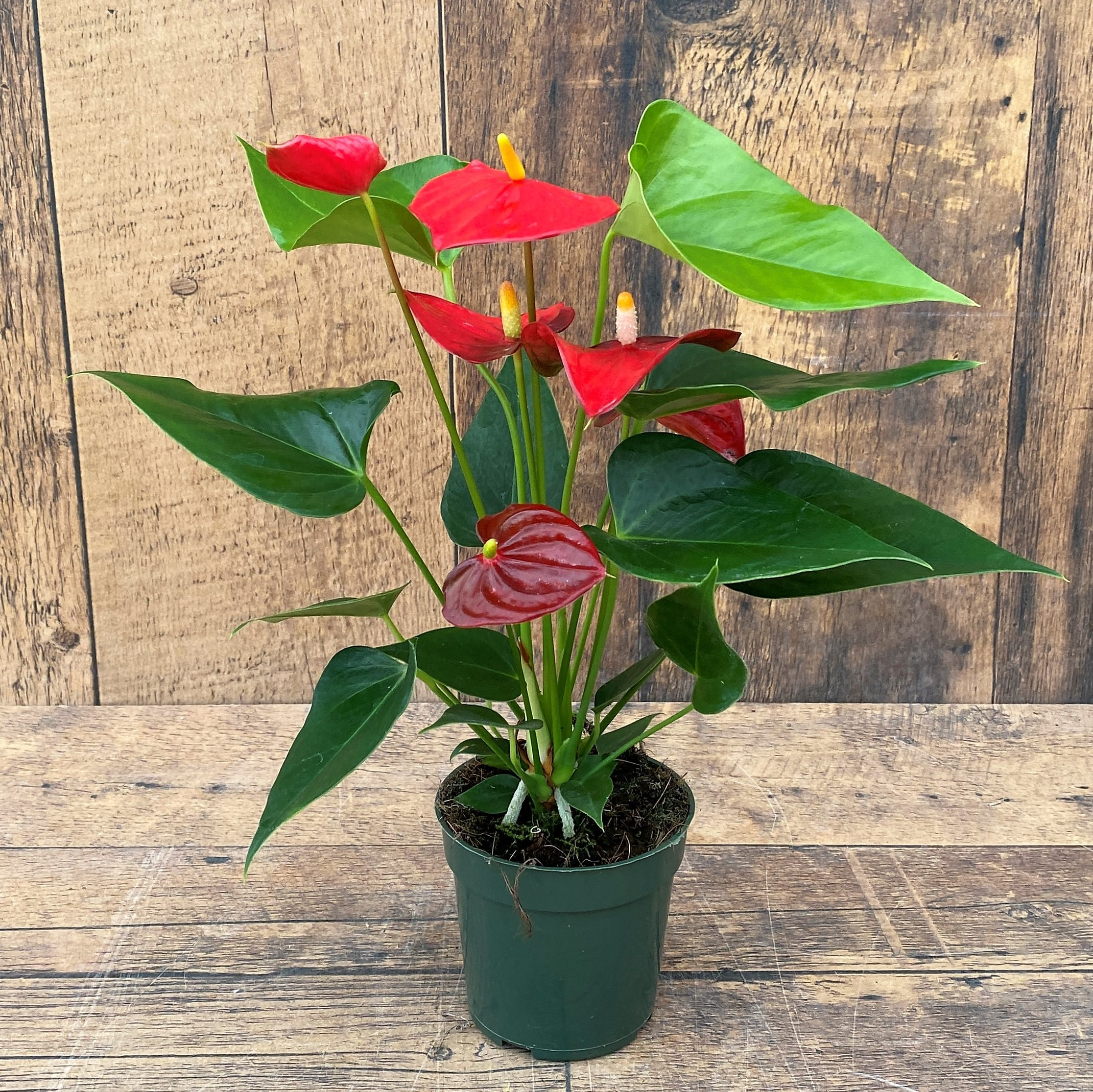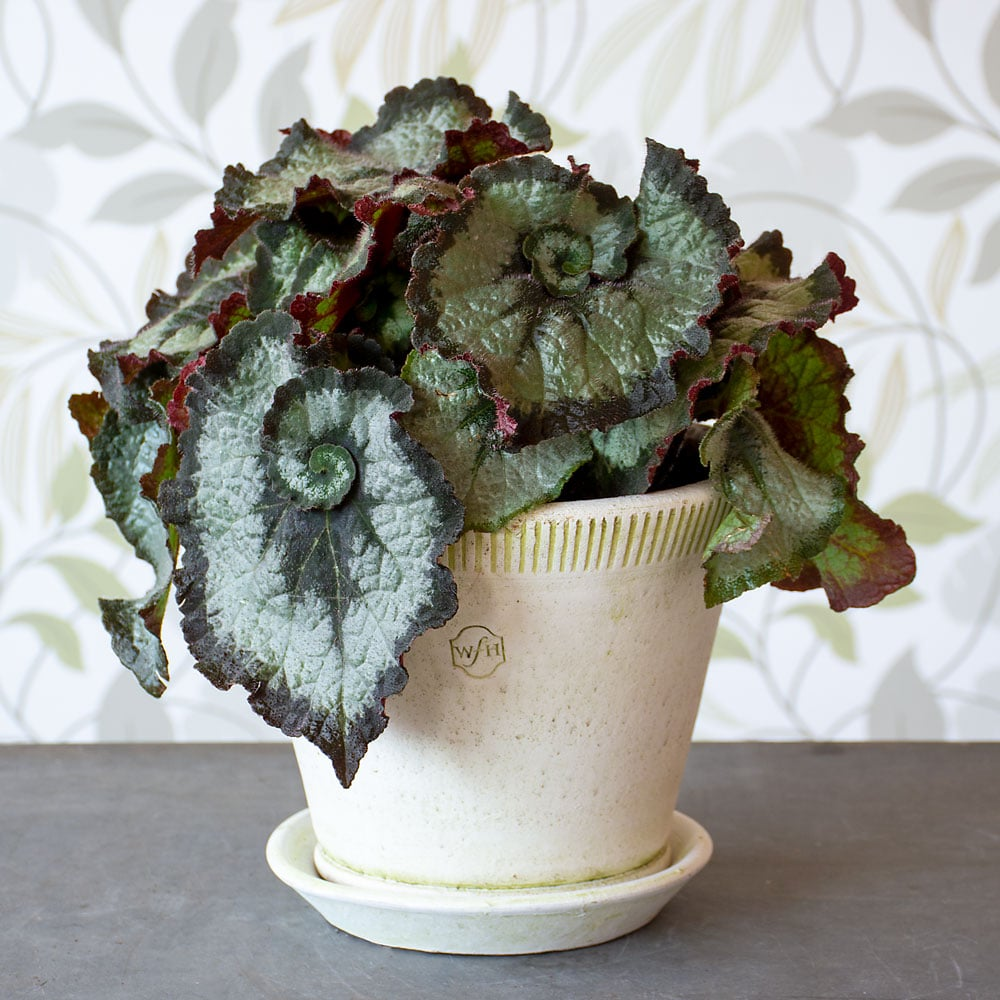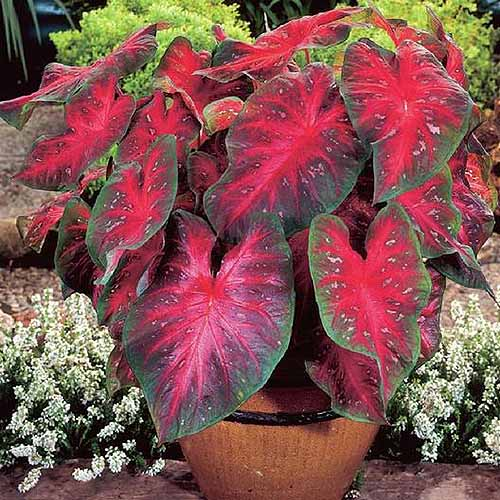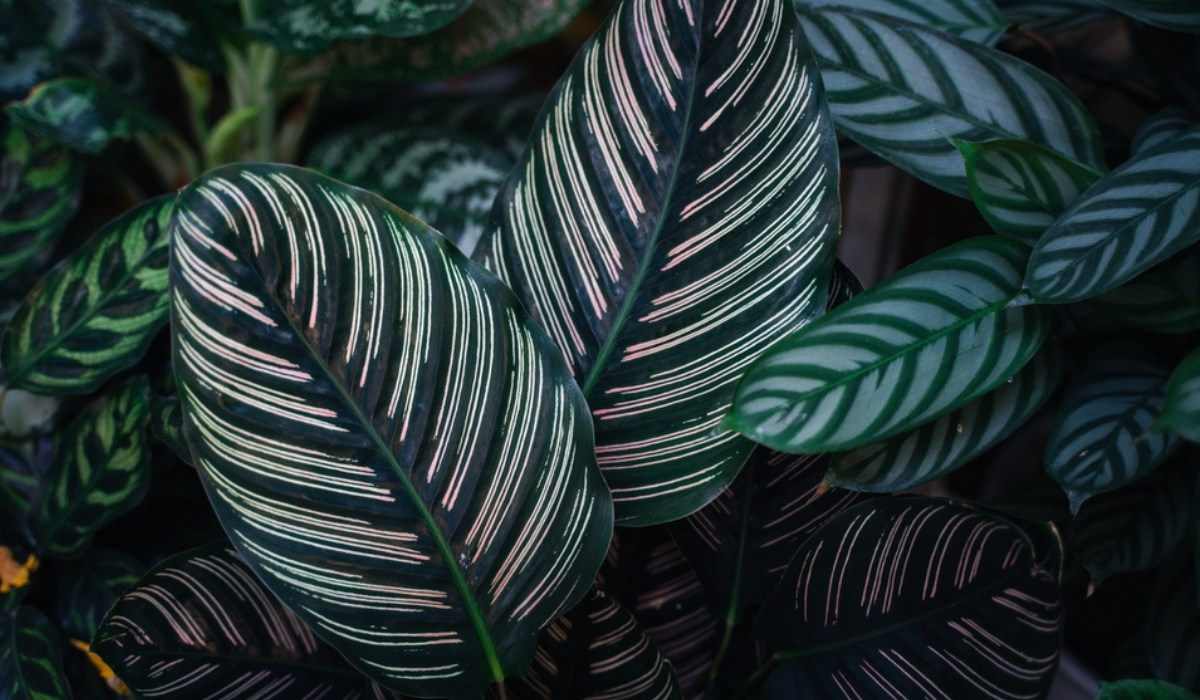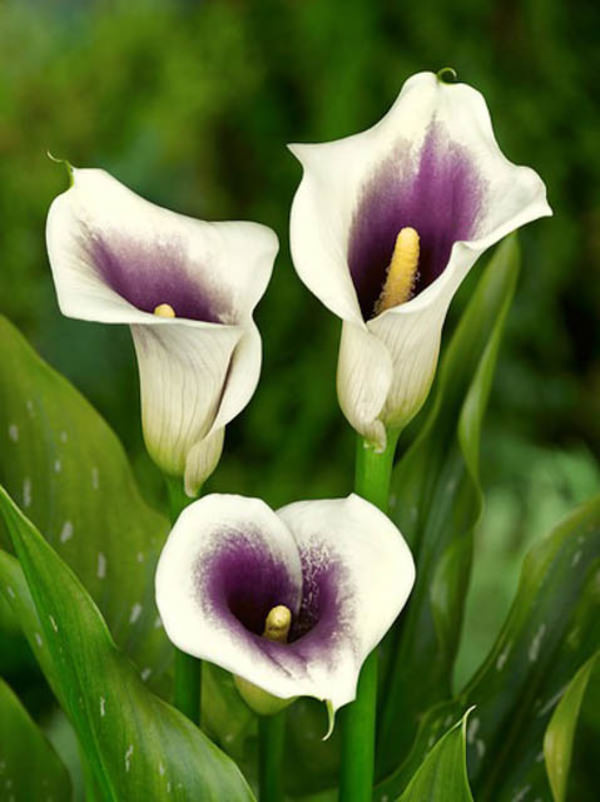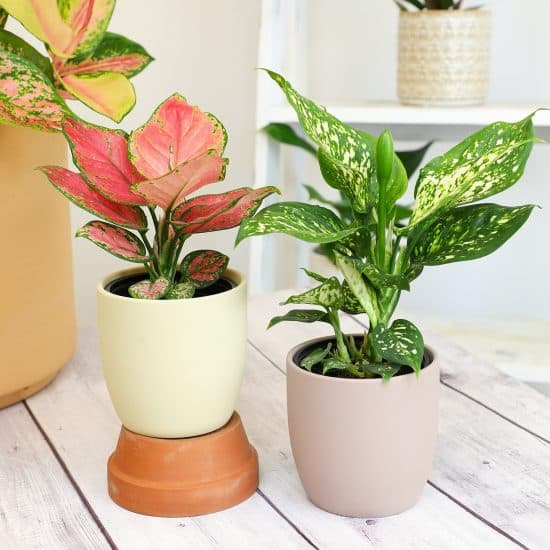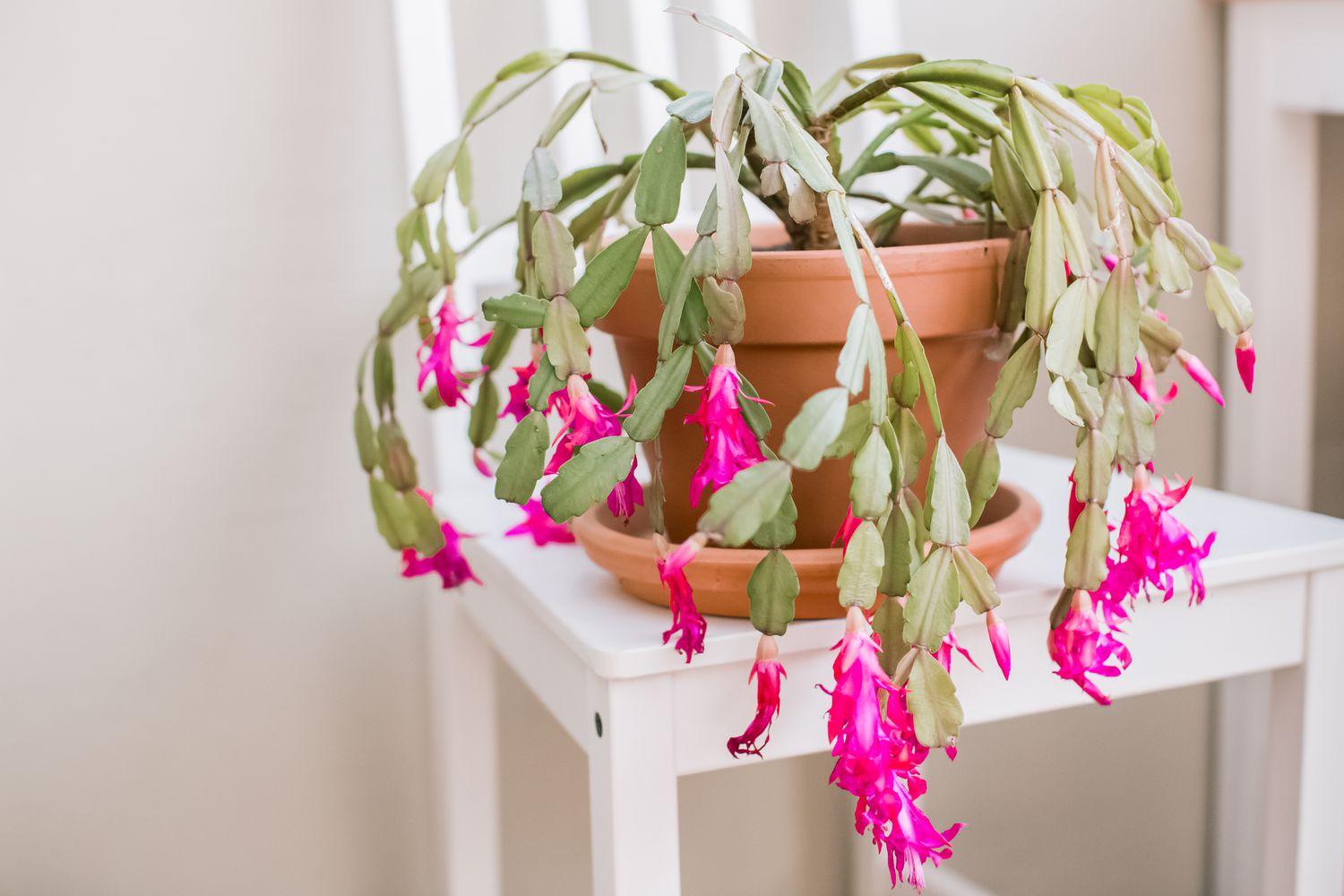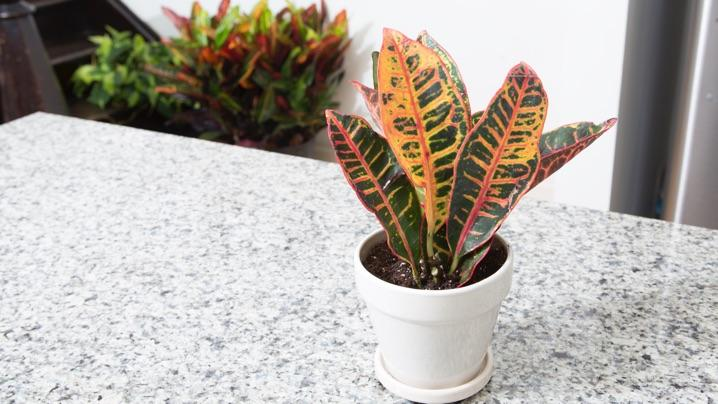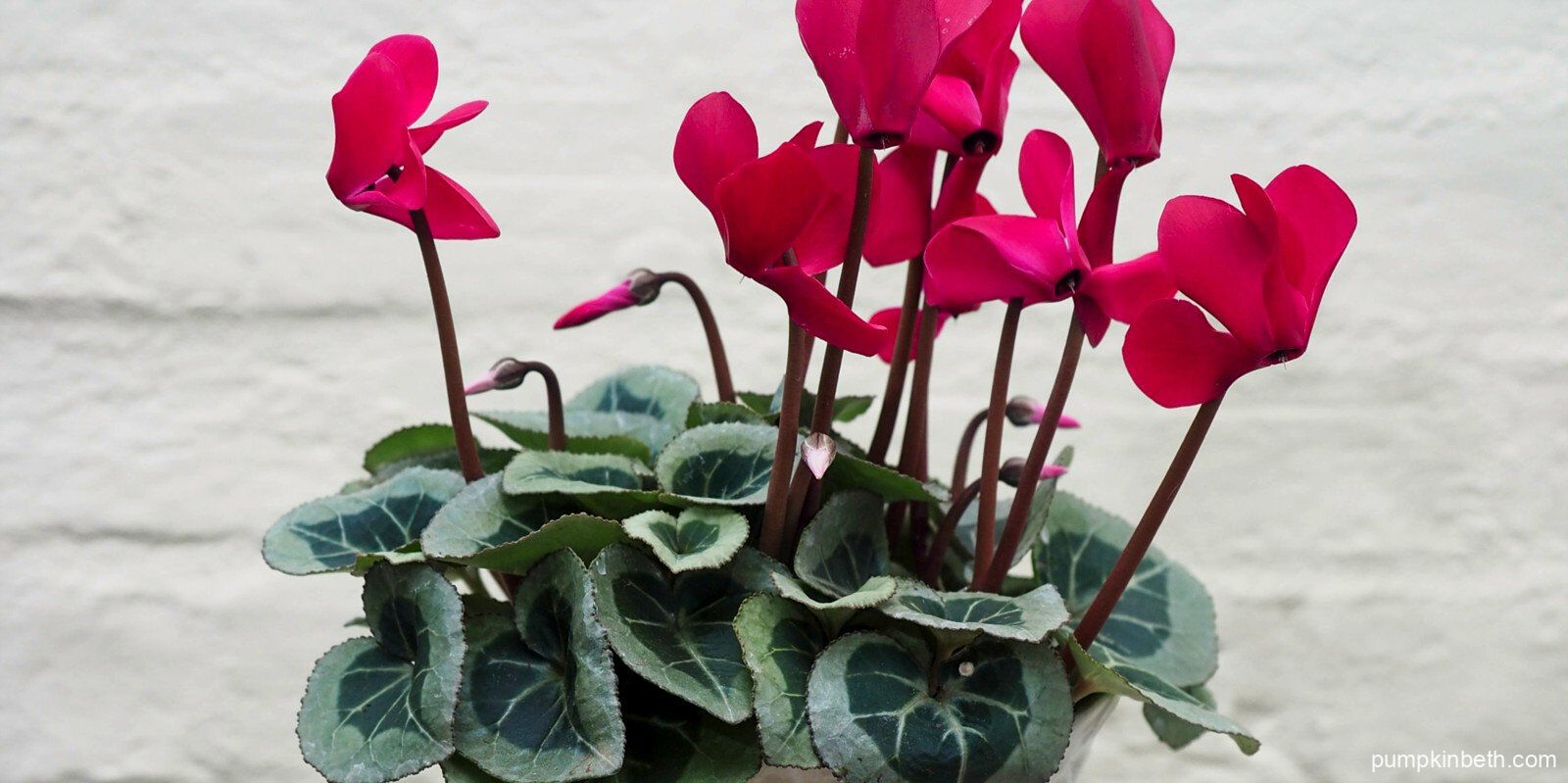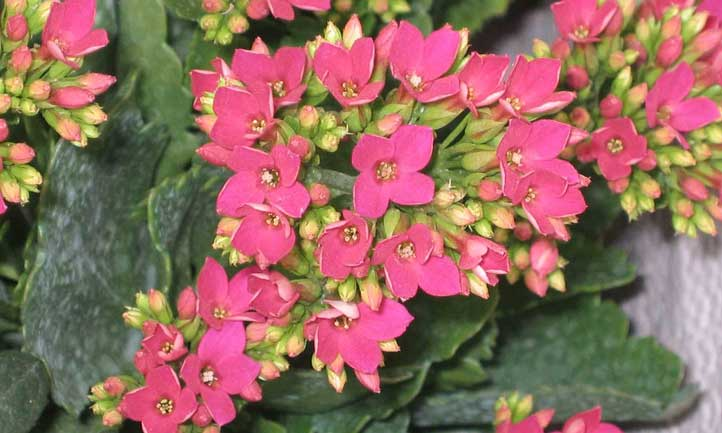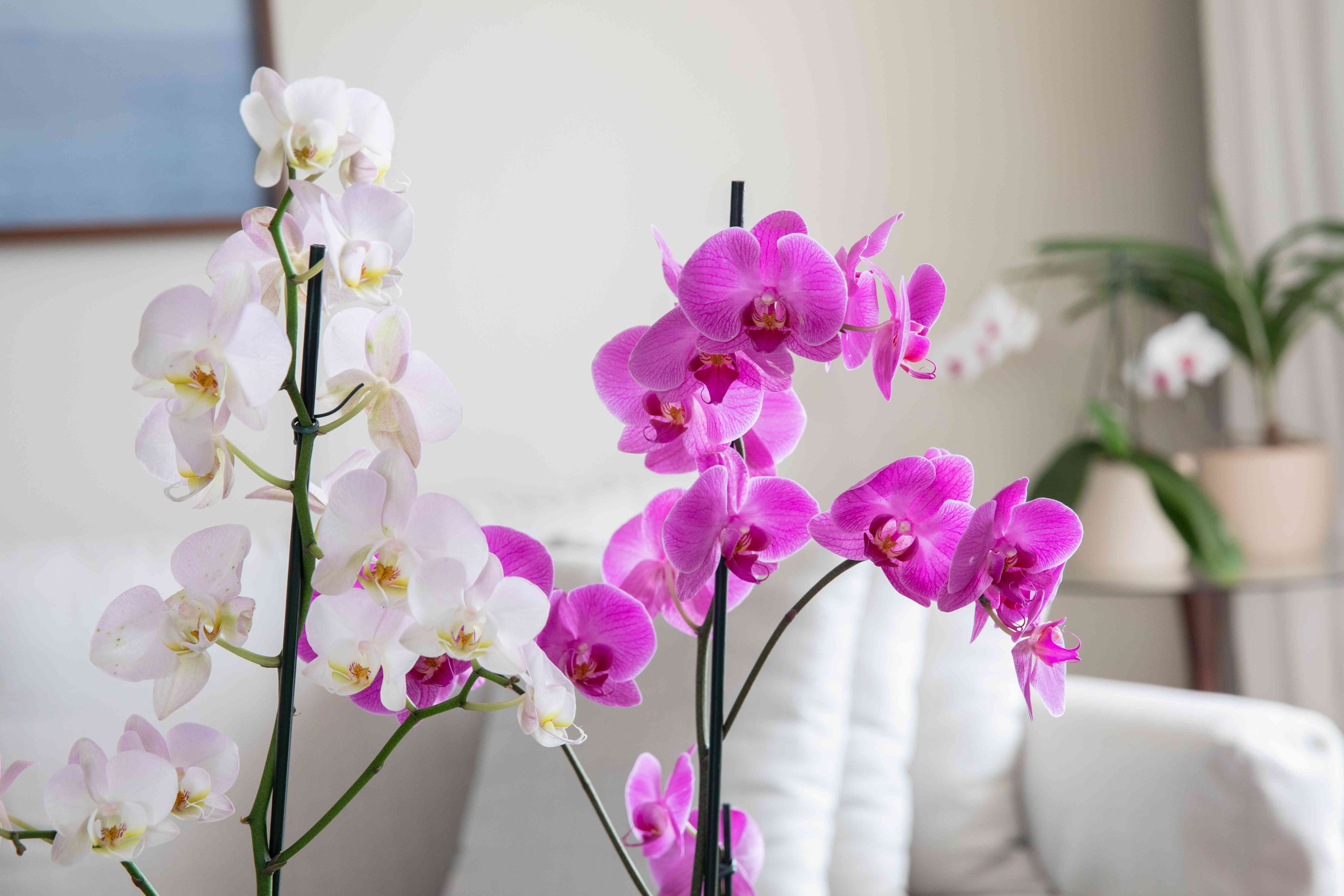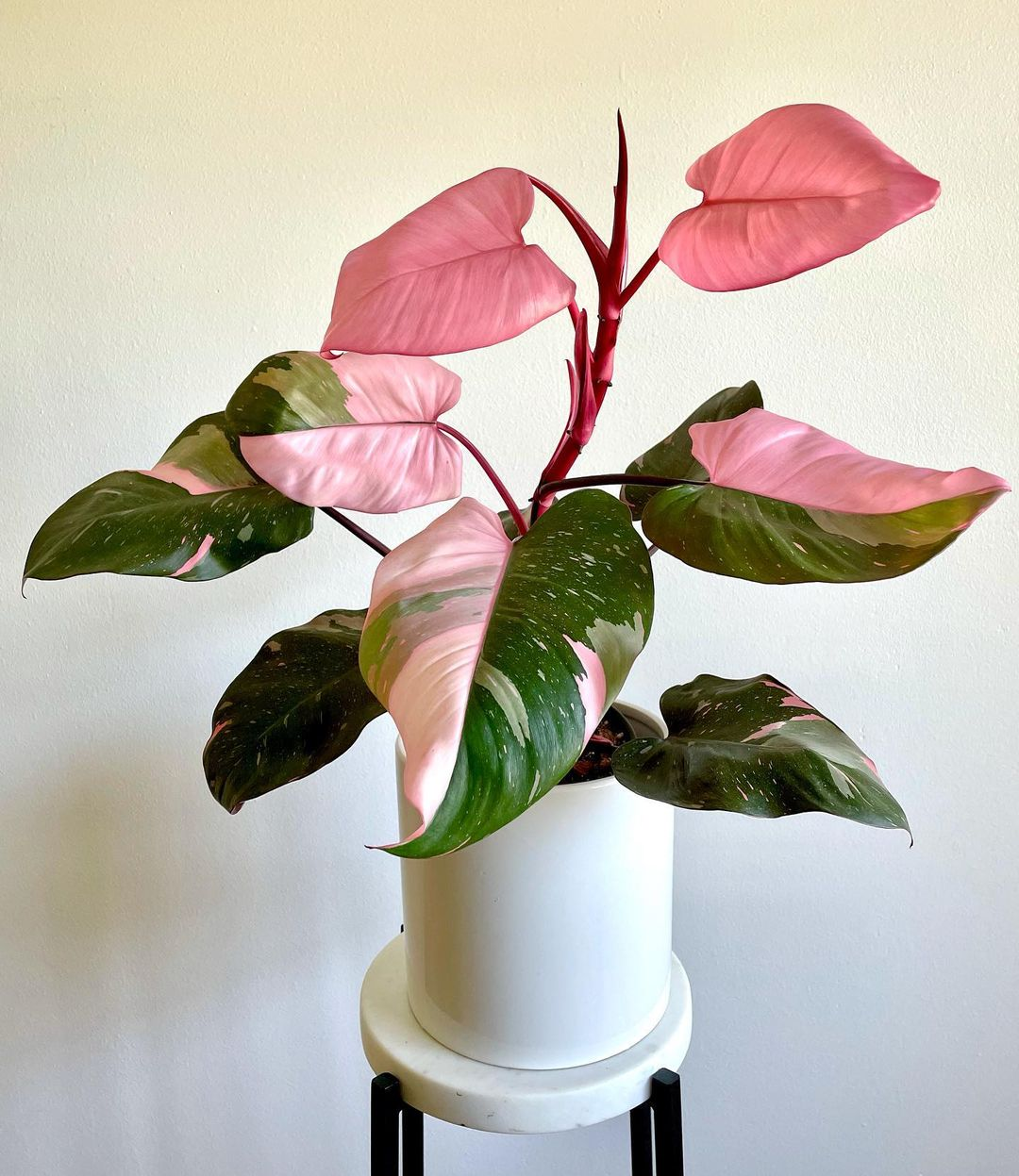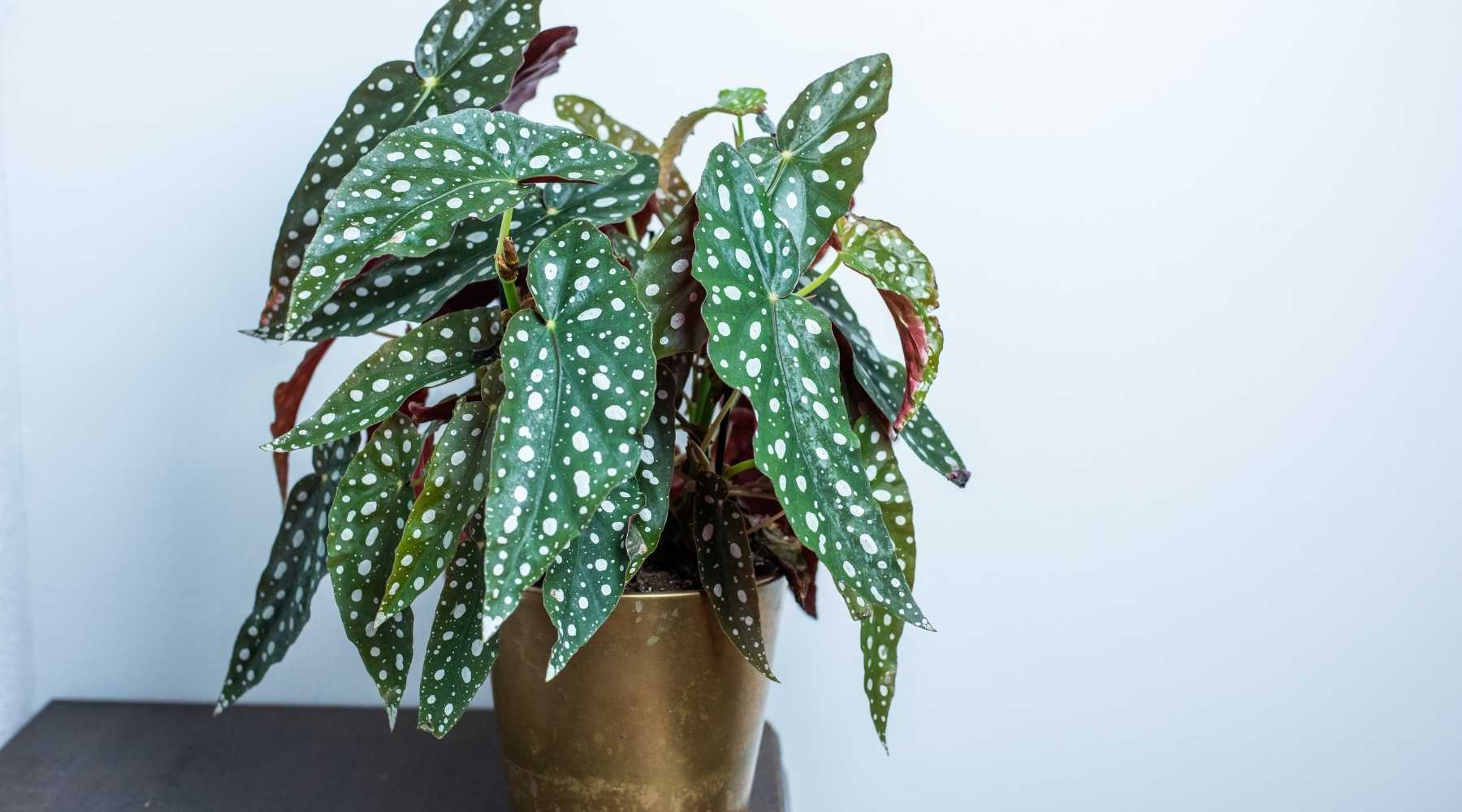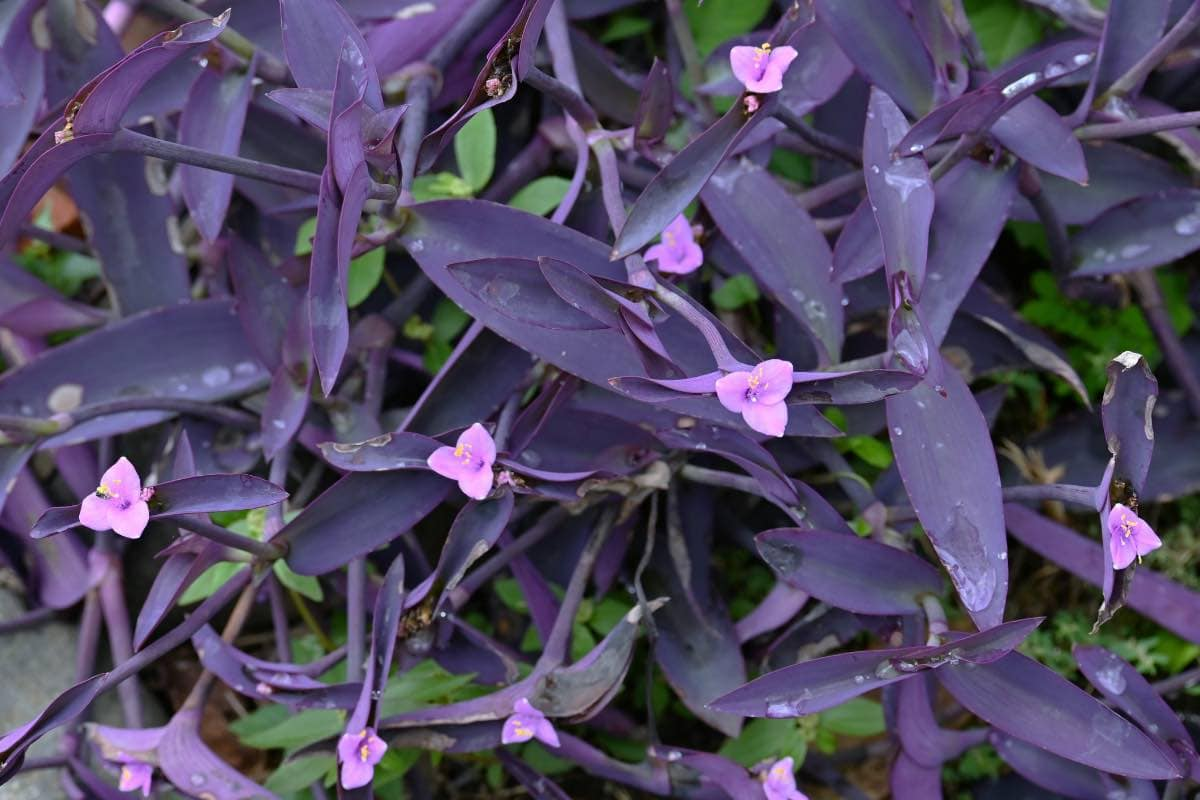HousePlantJoy is supported by our audience. When you purchase through one of our links, we may earn a small affiliate commission. As an Amazon Associate I earn from qualifying purchases. Your cost is not affected.
==================
Colorful Houseplants: 19 Species for Your Home is your ticket to transforming your living space into a vibrant and colorful oasis. Dive into the world of colorful houseplants and discover how to introduce a dazzling array of hues into your interior decoration. Whether you’re a seasoned plant enthusiast or a newbie looking to brighten your home, this guide will walk you through selecting colorful indoor plants. Enjoy the soothing greens, bold reds, calming blues, and every shade in between as you create your own indoor garden of beauty and tranquility. Say goodbye to dull spaces and hello to a burst of botanical brilliance!
Types of Colorful Houseplants
While it’s true that many houseplants hail from tropical regions and sport lush dark green leaves foliage, it’s safe to say that green foliage dominates the scene, but if you crave a dash of vibrant color in your indoor jungle, you’re in luck! Green isn’t the only shade in the houseplant palette.
A whole world of colorful houseplants is out there, each offering its unique burst of color. Whether it’s their leaves or blooms, you’ll find a variety of species and cultivars that can add that eye-catching pop you’ve been longing for. Find a prime spot in your home, and let these colorful houseplants brighten up your living space with their natural beauty.
African Violet
Photo By: Gardener’s Path
African violets (Saintpaulia ionantha) are a delightful addition to any indoor garden. These colorful houseplants come in a wide array of captivating colorful foliage, including shades of purple, blue, pink, white, and even sunny yellow. The best part? They’re low maintenance, making them a favorite among plant enthusiasts. Plus, it’s a great choice for those with allergies, as it’s not known to trigger any allergic reactions.
These charming plants thrive in bright, indirect sunlight, which means they’ll flourish in spots where they don’t get direct sun exposure. Give it a drink when the top inch of soil feels dry to the touch. Their blooms, though typically small and daisy-like, burst with vivid colors. Some varieties even boast double or triple blooms, adding a layer of beauty to your indoor space.
Anthurium
Photo By: TERRA Greenhouses
Anthurium, often known as the “Laceleaf” or “Flamingo Flower,” is a delightful addition to your indoor plant collection. These colorful houseplants are known for their striking flowers that come in various vibrant shades, such as red, pink, and white, and they can even surprise you with orange, yellow, or green blooms.
What’s fascinating is that these flowers’ show-stopping part differs from what you might expect. It’s not the petals but modified leaves known as a spathe that encircles a small cluster of flowers called a spadix. These tropical plant beauties are originally from the rainforests of South America, and they’ve made their way into our homes as easy-to-care-for houseplants.
Keeping your Anthurium plants well-hydrated is important, but be mindful not to let their soil become waterlogged. These beauties appreciate a regular watering routine so they stay happy and healthy.
Additionally, Anthurium plants love a bit of humidity in the air. To make them feel right at home, consider misting them regularly. If you want to go the extra mile, placing them in a room with naturally high humidity, like a bathroom, can be fantastic. Your Anthurium will thank you with its lush, vibrant foliage and stunning blooms.
With some tender loving care, anthuriums can be a year-round source of beauty, with only a brief break during the winter. Each bloom graces your space for a generous 2-3 months, accompanied by lovely heart-shaped leaves that add charm.
Begonia
Photo By: White Flower Farm
Begonias are a fantastic addition to your indoor garden, bringing vibrant colors to your space. These colorful houseplants come in a dazzling array of shades, from striking reds, pinks, oranges, and yellows to elegant whites and calming greens. Moreover, their colorful leaves can be quite the showstopper, with variegated patterns that showcase a delightful mix of colors.
Begonias aren’t just about their foliage; many varieties also grace your space with beautiful blooms. And the best part? There’s a begonia for everyone, with countless types, each boasting unique characteristics. Taking care of begonias is effortless. They’re relatively low-maintenance and adaptable to various conditions. These plants flourish when they receive plenty of bright, indirect light, and they truly enjoy having their soil consistently moist. The key to their good health is regular watering, but it’s equally essential to prevent the soil from becoming excessively waterlogged.
Remember those begonias are sensitive to the cold, so place them in a warm and cozy location; you can place them in a sunny or bright window.
Bird of Paradise
Photo By: Garden Design
Having a Bird of Paradise plant (Strelitzia reginae) in your home is like bringing a piece of the tropics indoors. Originating from the sunny landscapes of South Africa, it’s a real favorite colorful houseplants. What truly makes it stand out is its stunning plant oversized flowers that resemble birds in full flight.
These remarkable flowers often sport shades of vibrant orange, cheerful yellow, or pristine white, nestled within a bract that mimics a bird’s head and beak. And once the flowering show is over, the Bird of Paradise plant surprises you with small blue or purple berries.
Now, here’s the scoop on taking care of these beauties. Bird of Paradise plants are slow when it comes to growth, and if they don’t get enough light indoors, they might not grace you with their fabulous flowers. They thrive on sunlight, so try to provide them with a solid 4-6 hours daily. They’re also big fans of staying well-watered and cozy in warm temperatures. Bird of Paradise plants can thrive indoors in bright, direct sun. However, it is important to gradually introduce the plant to direct sunlight, as too much sunlight can scorch the leaves.
Caladium
Photo By: Gardener’s Path
Caladiums are a splendid choice for adding color to your indoor garden. These colorful houseplants are renowned for their generously sized, heart-shaped leaves; even more delightful, these leaves often come in vibrant hues. You can expect shades like striking reds, pretty pinks, pristine whites, and lush green leaves, depending on the specific caladium variety.
Here’s the deal with caladiums: they’re all about warm, humid climates. Standing at a modest 12 to 30 inches in height, they thrive in cozy, tropical conditions. To keep them in tip-top shape, caladiums appreciate a bit of downtime each year to rejuvenate. Remember, their delicate leaves are sensitive to direct sunlight, so it’s essential to provide them with bright but indirect light to avoid scorching.
Calathea
Photo By: Housing
Calathea is a true gem among colorful houseplants. If you’re a foliage enthusiast searching for vibrant hues to liven up your indoor space, look no further than the various types of calathea plants. This genus is a treasure trove of stunning leaves, featuring captivating two-tone combinations like lush green and vibrant pink or elegant cream paired with soothing green, often with hints of delicate pink or even dual shades of green.
Now, the exciting part: Despite their intricate appearance, caring for calatheas is a breeze, with requirements similar to most tropical houseplants’ requirements. These plants hail from the lush landscapes of Central and South America, where they thrive beneath the canopy of tropical jungles. As a result, they adore bright indirect light, warm temperatures, and a touch of humidity.
Calatheas are more than just pretty leaves; they contrast with other green foliage plants and add visual intrigue when your other plants aren’t in bloom. When watering, a weekly sip of water should keep them content. So, if you’re seeking a foliage superstar that effortlessly brings color and charm to your home, calathea is your leafy companion of choice!
Calla Lily
Photo By: Millstone Garden Centre
Calla lilies (Zantedeschia) bring a delightful array of colorful blooms into your home. They’re fantastic houseplants, perfect for brightening up a sunny window, and here’s the best part – they’re a breeze to take care of. Just water them about once a week and give them a monthly sip of liquid fertilizer, and they’ll thrive.
These beauties put on quite a show, with their lovely spathes gracing your space for a generous eight weeks, infusing your home with vibrant color. And here’s a handy tip: once they’ve finished their stunning display, you can tuck them away in a cool spot to rest until spring. When you decide to water them again, your calla lily will perk right up, ready to bloom anew.
These tropical gems are guaranteed to infuse any room in your home with a lush burst of dazzling color.
Chinese Evergreen
Photo By: Plantcarefully
Chinese evergreens ( Aglaonem ), also known as good luck plants for their luck-bringing reputation in Asia, come in various colors and patterns that bring a pop of color to your indoor space.
Their leaves feature shades like red, pink, silver, maroon, and different greens. These plants can even produce pretty flowers, but many people remove them to make the plant last longer.
The best part? They’re easy to take care of. You give them the basics, and they’ll thrive. They can handle low light but do even better with bright, indirect sunlight. They’re used to low light conditions because they come from tropical forests, which grow under the tree canopy.
Christmas Cactus
Photo By: The Spruce
The Christmas cactus ( Schlumbergera ) is a real mood-lifter whose name says it all. When most other flowers take a break during Christmas, this beauty steps into the spotlight with its vibrant blooms. Christmas cactus flowers come in charming colors like bright red, pink, or even sunny yellow.
These blooms are grouped in clusters, creating a lovely burst of color that can stick around for several weeks. So, you’ll get to enjoy their beauty for an extended holiday season. But what makes it truly enchanting is its elegant cascading growth, with leaves gracefully spilling over pot rims or hanging baskets adorned with those lovely flowers at the tips.
In their native homes, Schlumbergera, the Christmas cactus’s scientific name, are epiphytes that flourish in the shade of trees within lush tropical rainforests. This sets them apart from your typical desert cacti, which means they have some distinct care needs.
The good news is that replicating their natural habitat is a breeze when growing them indoors. You’ll want to create a high-humidity environment, ensure that you place it in well-draining soil, give it a good drink every few weeks, and simply place it in a hanging basket.
Croton
Photo By: Miracle-Gro
Croton (Codiaeum variegatum) is A tropical leafy plant that’s all about the drama of color in its leaves. What’s truly intriguing is that this unusual plant can flaunt various color variations on the same plant, earning it a well-deserved reputation as one of the most vibrant indoor plants you can bring into your home.
Crotons can stretch up to a towering 10 feet tall in its natural tropical habitat when grown outdoors. But potted indoors, they’ll stay a bit more compact. Nevertheless, they still appreciate some space and a prime spot with bright sunlight during the day. The more sunshine they soak up, the more vibrant their leaf colors become.
Now, here’s a crucial tip: once you’ve found the perfect spot and your croton is thriving, try not to relocate it too often. These plants can be a tad sensitive to environmental changes, and moving them might cause them to shed their leaves in protest. But don’t fret if that happens—with proper care, those leaves will likely make a triumphant return, ready to dazzle you again.
Cyclamen
Photo By: Pumpkin Beth
Introducing the charming Cyclamens, formally known as Cyclamen persicum. These beauties take center stage during the autumn and winter months, showcasing an array of striking colors, white or pink flowers and red, among others. What makes their blooms truly unique is how the petals seem swept backward, as if they’re ready for take-off.
Now, here’s the thing about cyclamens: they’re all about cool temperatures and a touch of humid environment. They hail from Mediterranean regions, where they enjoy cool and damp winters. When the scorching summer arrives, they take a break and go dormant. During this time, their leaves may turn yellow and fall off. But here’s the catch—don’t fret! The tubers beneath the soil are simply taking a well-deserved rest and will reawaken in a couple of months.
If you keep them cool and dry during their dormancy, they’ll reward you with lush foliage and vibrant flowers for years to come, making them one of the most colorful plants. As for watering, a weekly drink should keep them content.
Flaming Katy
Photo By: Epic Gardening
Flaming Katy, also known as Kalanchoe blossfeldiana. These charming succulents are known for their enduring flowers and plump, succulent leaves, making them quite the head-turners. Their clusters of blooms come in a dazzling array of vibrant colors, including shades of pink, orange, red, sunny yellow, and pristine white. Originating from the dry, arid landscapes of Madagascar, Kalanchoe blossfeldiana belongs to the impressive family of 125 Kalanchoe species of tropical succulents found in various regions.
What makes these succulents extra special is their knack for being incredibly low-maintenance plants. They don’t demand much water, and all they crave is a bright indirect light spot to entice them to burst into bloom. If you’ve got a Flaming Katy,
Consider giving it the star treatment with a hanging basket. This setup lets the plant drape gracefully, showcasing its stunning cascading flowers. However, here’s a crucial tip: make sure the hanging basket has drainage holes. This way, you’ll avoid soggy soil, which can be a bit of a downer for your lovely Flaming Katy.
Guzmania
Photo By: Bromelia.info.
Let’s talk about a fascinating bunch of bromeliads known as Guzmania. These beauties have made quite a splash as houseplants, mainly thanks to their spiky and vivid flower bracts in a dazzling array of colors. These plants may look intricate, but caring for them is far from complicated.
What makes them tick is moderate humidity and a preference for filtered or distilled water rather than tap water. One of the neat things about Guzmanias is that they regularly produce pups that you can repot, allowing you to easily infuse your home with a riot of colors once you have just one of these beauties.
Now, it might take a bit of patience, but when a Guzmania decides it’s time to bloom (usually after a few years), the vibrant display can stick around for up to six months. Plus, their unique shapes make the wait all the more worthwhile.
Nerve Plant
Photo By: Petal Republic
Nerve plants are also known as fittonia albivenis, mosaic plants, or water nerve plants. This colorful gem hails from South America and is famous for its vibrant leaves, which come in various shades, including green, pink, white, and red.
Now, what’s truly eye-catching about nerve plants is their leaf arrangement—they’re neatly arranged in an alternating pattern on the stems, and their oval shape adds to their charm. The real showstopper is the different-colored veins running through the leaves, where the plant gets its name.
When it comes to care, nerve plants are pretty chill. They can thrive indoors or outdoors and prefer to bask in bright, indirect sunlight. Keeping their soil moist is key, but make sure it doesn’t turn soggy. Also, a heads-up: They’re not fans of chilly temperatures, so keep them in a cozy, warm spot.
Orchid
Photo By: The Spruce
When it comes to houseplants with flowers that stick around, orchids take the crown. Orchid blooms can hang in there for months, and the best part? You can practically forget about them most of the time. These beauties are peculiar – too much love and attention can be their downfall.
Now, there are plenty of orchid types out there, but the ones you’ll likely find as indoor plants are the Phalaenopsis, often referred to as moth orchids. And boy, do they come in a dazzling array of eye-catching colors.
Here’s the secret sauce for keeping orchids happy: pop them in a spot with plenty of bright light, and when it’s time to water, give them a good soak about once every 1-2 weeks. Stick to this routine, and you’ll be treated to breathtaking blooms.
Philodendron Pink Princess
Photo By: Eco Club
Philodendron erubescens ‘Pink Princess’—a truly special plant with collectors flocking to it like bees to honey. Why? It’s all about those eye-catching mottled pink and dark green leaves. Each new leaf is like unwrapping a surprise gift on this fuss-free plant. No wonder it’s become one of the hottest houseplants on the market, with Instagram feeds everywhere showing off its captivating foliage.
Now, here’s the scoop on keeping your ‘Pink Princess’ happy: provide it with bright indirect light, keep the humidity at moderate levels, and give it a regular sip of water. With this simple care routine, you’ll be treated to a constant stream of new leaves to marvel at.
This charming hybrid comes from the Philodendron erubescens, native to the tropical regions of Central and South America, specifically around Columbia. But here’s the kicker: Pink Princess is not your average run-of-the-mill plant. It’s grown in a lab and propagated from cuttings to preserve its stunning coloration.
Polka Dot Plant
Photo By: Bloombox Club
Polka Dot Plant, also known as Hypoestes phyllostachya, or by its fun aliases like the freckle face or confetti plant. This lively character hails from the gorgeous island of Madagascar and is all about adding a splash of color to your life. Its claim to fame? Those vibrant leaves are usually dressed in green but adorned with playful pink, white, or red spots.
In its native lands, polka dot plants often play the role of annuals in outdoor gardens. And here’s the thing—they’re not just about fancy foliage. They also explode into vibrant blossoms. However, if you’re growing them indoors, it’s a good idea to nip those flower buds in the bud (pun intended!) as soon as you spot them. This way, your plants won’t go to seed and can focus on delighting you with their spectacular spotted leaves.
When it comes to care, these polka-dot darlings enjoy basking in bright, indirect sunlight. And as for their watering routine, a weekly drink should keep them feeling content.
Prayer Plant
Photo By: MyDomaine
Prayer Plants (Maranta leuconeura) have quite a bit in common with the calatheas we mentioned earlier. However, some differences in leaf shape and markings set them apart. These intriguing plants have a charming quirk—they fold their leaves at night. Marantas exhibit a bit more cold resistance when compared to calatheas, and their spreading growth habit makes them an excellent fit for hanging baskets. They’re known for being easy to care for and for their delightful nightly leaf-folding rituals.
Wandering Jews
Photo By: Planet Natural
Wandering Jew, also known as Tradescantia zebrina or by its charming nicknames like Inch Plant, Moses-in-the-Cradle, or Wandering Dude. This vibrant plant originally hails from Mexico and is all about adding color to your life. Its signature look? Lush green leaves adorned with stylish purple or pink stripes.
Now, here’s the deal—Wandering Jews are pretty low-maintenance, which makes them a popular choice for both indoor and outdoor gardens. They’re big fans of bright, indirect sunlight and moderately moist soil. But here’s a tip: while they appreciate regular watering, ensure that soil doesn’t turn into a soggy mess.
Conclusion
Creating a colorful indoor garden is a wonderful way to breathe life, vibrancy, and natural beauty into your home. By introducing these captivating houseplants into your living space, you not only elevate your home’s aesthetics but also enjoy the therapeutic benefits of nurturing green life. Embrace the soothing greens, bold reds, calming blues, and every shade in between as you create your personal indoor garden of beauty and tranquility. Bid farewell to dull surroundings and say hello to a burst of botanical brilliance that will uplift your spirits and enhance your daily living.
FAQs
What Plants Have Leaves That Change Color?
Numerous plant varieties exhibit leaves that undergo color transformations. Among the most renowned are: Maple trees and Dogwood trees.
Can I Fertilize Colorful Houseplants to Enhance Their Colors?
Fertilizing your colorful houseplants can help maintain healthy growth and vibrant foliage. However, using a balanced, all-purpose indoor plant fertilizer according to the plant’s specific needs is usually sufficient.
Can I Propagate Colorful Houseplants to Create More Plants?
Yes, many colorful houseplants can be propagated through methods like stem or leaf cuttings, division, or offsets. Propagating your plants allows you to expand your collection and share them with others.
?? Houseplant Lovers Unite! ??
Welcome to HouseplantJoy blog, your ultimate destination to dive into the captivating world of houseplants and gardening tips. Whether you’re a plant enthusiast or just starting your green journey, our Facebook page is here to nurture your passion for leafy and lush.
? Hey there, green thumbs and plant enthusiasts! Are you looking to add a touch of nature to your life? ?? Look no further than Houseplant Joy! ??
?? Let’s grow together! Follow us on Facebook, Instagram, and Twitter to embark on an exciting journey of houseplant bliss. ??
? Facebook: Dive into the world of houseplants and tips at facebook.com/houseplantjoyblog. ??
? Instagram: Immerse yourself in a visual feast of stunning houseplant inspiration at instagram.com/houseplantjoy20. ??
? Twitter: Stay in the loop with our green community and stay updated on the latest trends in the houseplant world at twitter.com/HouseplantJoy. ??
Stay in the loop with the Houseplant Joy community on Twitter, your go-to source for all things houseplants and gardening trends. We are your green companions on this exciting journey, keeping you updated on the latest happenings in the ever-evolving world of indoor greenery.
? Why Should You Join Us? ?
? Get insider secrets: Unearth the best-kept secrets to keep your plants thriving and blooming like never before. ??
? Expert advice: Gain access to our team on Facebook, Twitter, and other social media channels, and meet our ,gardening experts eager to help you on your plant journey. ???
? Engage with like-minded souls: Connect with fellow plant lovers, exchange stories, and build a supportive community. ??
?? Join us today! Follow Houseplant Joy on Facebook, Instagram, and Twitter for daily inspiration and a blooming good time! ?? #HouseplantJoy #GreenThumbsUnite #HouseplantLove

